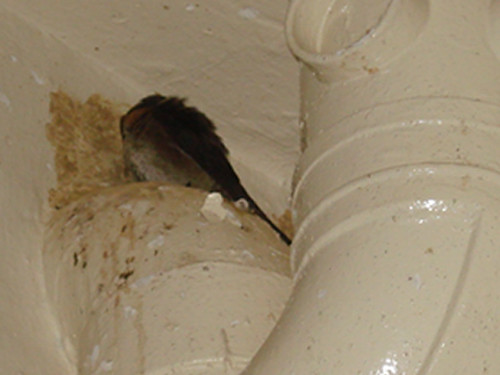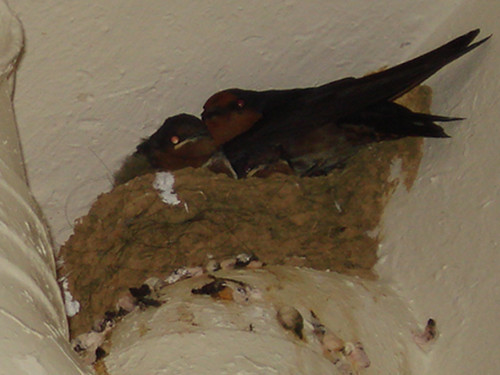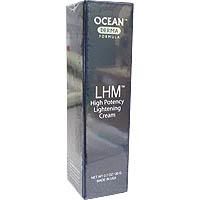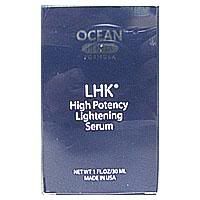30 June 2007, ST
By Paul Jacob, Deputy Political Editor
I AM not what a greenie would label an environmentally friendly product.
I do not read labels on fridges, air-conditioners or power-hungry equipment to see how efficient or green-friendly they are.
My smoking, choice of car and general disregard for use of public transport, car-pooling, walking or cycling no doubt contribute to my ever-widening personal carbon footprint.
That's the new phrase that is becoming popular these days: carbon footprint.
It's the amount of carbon dioxide released into the atmosphere as a result of the energy we use, the transport we take, the waste we dispose of in a year.
It's our contribution, if you like, to why it's getting warmer around the world, and to why there are growing concerns about rising sea levels and the lot.
This is the stuff that environmentally concerned individuals and former United States vice-president-turned-global environmental icon Al Gore keep screaming at us to take notice of.
And you ignore the warnings at your own peril because uninformed and ignorant individuals could, over time, become no better than the herds of livestock which are already responsible for 18per cent of greenhouse gas emissions.
These are more than the emissions caused by transportation, according to a report earlier this year by the United Nations' Food and Agriculture Organisation.
Which is also why there are growing calls for people to go vegetarian. That reduces the demand for meat and the need for herds of cattle and other livestock, and animal gas emissions will dissipate.
As the Christian Science Monitor reported earlier this year, citing environmental group EarthSave International's executive director, Mr Noam Mohr, changing people's diet can lower greenhouse gas emissions quicker than shifting away from fossil fuel burning technologies.
I'm as interested as the next guy in how climate change, global warming and the like will affect our future. But like the next guy, I've also waited for others to act first.
So it was instructive and fascinating when I caught a segment of a series called the Ethical Man on the BBC channel recently. It's fronted by journalist Justin Rowlatt, who spent a year trying to lead an environmentally friendly life.
I read later that it involved, among other things, giving up the family car, switching to cloth nappies for the babies, starting a compost heap, not flying when going on holiday, and sourcing food locally because imported products leave a significantly greater carbon trail as goods have to be transported over longer distances.
The family reduced their carbon footprint by some 20 per cent as a result.
The segment I caught had Mr Rowlatt in Mumbai, trying to convince a middle-income executive to become India's equivalent of the Ethical Man by, among other things, installing energy-saving light bulbs, giving up his car and using public transport.
Impossible, said the man. He couldn't afford to turn up at a client's office all dishevelled and sweat-stained after extracting himself from one of the city's cramped, overcrowded buses.
The programme contrasted the executive's lifestyle with a family of 11 living in the city's slum area: no air-conditioning or car, no television or major electrical appliances - and of course, a decidedly smaller carbon footprint.
There's that word again.
His determined crusade-like approach to convince someone in the teeming urban setting of Mumbai to take up the challenge didn't make a convert out of me.
But it piqued my interest enough to make me find out just how much of an accomplice I was in contributing to climate change through my carbon footprint.
A quick Google search and I was ready to be measured: type of home and number in the household; appliances and their rating; use of electricity; car, engine-type and annual mileage; use of alternative public transport; frequency of flying for business or vacations; recycling habits.
The upshot for my household of six: a total of nearly 40 tonnes of carbon dioxide emissions annually - the significant bulk of which is from 'vehicle travel'.
It's quite a shocker when you consider what the Singapore average is: 8.38 tonnes.
I'm not about to become the Ethical Man here, but the results are, obviously, sobering - even though the breakdown on an individual basis for my household of six sits comfortably below the nation's average.
Still, it remains a sobering thought because you have to reckon that there are thousands upon thousands of other Singaporeans who may be disinterested or unaware of the impact that their lifestyle and choices have on the common space and environment that we are supposed to care and be considerate about.
Families and individuals will need to make their own calculations and determine what adjustments to make to their footprint.
The environment does not always feature high on priority lists because there's a slew of what we see as other and more immediate concerns.
We look out the window and see blue skies and greenery and think, well, it all looks fine, the Government's taking care of things, the other guy is doing his bit, schools are educating students on their role, and there are those environmental groups out there anyway working to save the earth.
Disinterested as I have been, I'd be very worried today if that is the attitude most of us have.
One way or another, we must have our own moment of realisation - whether it's prompted by coming across a TV programme by chance, or by not being given a plastic bag at the supermarket checkout counter.
We don't all have to spend a year being the Ethical Man, but we need to start thinking like him.
I've begun that process. It's also very clear that the chief culprit in my footprint is the use of the cars, which account for more than half the annual emissions.
I don't plan, like the Rowlatt family, to turn in the keys. But there obviously has to be some serious cutting back on the extent to which they are used - like for short trips to the 7-Eleven to, er, buy cigarettes - which is another 'emissions' issue I intend to do something about.
Yes, I'm starting small. But if you want to begin the journey too, start by getting a measure of your footprint. You can do so by going to www.bp.com and typing 'carbon footprint calculator' in its search feature.
By Paul Jacob, Deputy Political Editor
I AM not what a greenie would label an environmentally friendly product.
I do not read labels on fridges, air-conditioners or power-hungry equipment to see how efficient or green-friendly they are.
My smoking, choice of car and general disregard for use of public transport, car-pooling, walking or cycling no doubt contribute to my ever-widening personal carbon footprint.
That's the new phrase that is becoming popular these days: carbon footprint.
It's the amount of carbon dioxide released into the atmosphere as a result of the energy we use, the transport we take, the waste we dispose of in a year.
It's our contribution, if you like, to why it's getting warmer around the world, and to why there are growing concerns about rising sea levels and the lot.
This is the stuff that environmentally concerned individuals and former United States vice-president-turned-global environmental icon Al Gore keep screaming at us to take notice of.
And you ignore the warnings at your own peril because uninformed and ignorant individuals could, over time, become no better than the herds of livestock which are already responsible for 18per cent of greenhouse gas emissions.
These are more than the emissions caused by transportation, according to a report earlier this year by the United Nations' Food and Agriculture Organisation.
Which is also why there are growing calls for people to go vegetarian. That reduces the demand for meat and the need for herds of cattle and other livestock, and animal gas emissions will dissipate.
As the Christian Science Monitor reported earlier this year, citing environmental group EarthSave International's executive director, Mr Noam Mohr, changing people's diet can lower greenhouse gas emissions quicker than shifting away from fossil fuel burning technologies.
I'm as interested as the next guy in how climate change, global warming and the like will affect our future. But like the next guy, I've also waited for others to act first.
So it was instructive and fascinating when I caught a segment of a series called the Ethical Man on the BBC channel recently. It's fronted by journalist Justin Rowlatt, who spent a year trying to lead an environmentally friendly life.
I read later that it involved, among other things, giving up the family car, switching to cloth nappies for the babies, starting a compost heap, not flying when going on holiday, and sourcing food locally because imported products leave a significantly greater carbon trail as goods have to be transported over longer distances.
The family reduced their carbon footprint by some 20 per cent as a result.
The segment I caught had Mr Rowlatt in Mumbai, trying to convince a middle-income executive to become India's equivalent of the Ethical Man by, among other things, installing energy-saving light bulbs, giving up his car and using public transport.
Impossible, said the man. He couldn't afford to turn up at a client's office all dishevelled and sweat-stained after extracting himself from one of the city's cramped, overcrowded buses.
The programme contrasted the executive's lifestyle with a family of 11 living in the city's slum area: no air-conditioning or car, no television or major electrical appliances - and of course, a decidedly smaller carbon footprint.
There's that word again.
His determined crusade-like approach to convince someone in the teeming urban setting of Mumbai to take up the challenge didn't make a convert out of me.
But it piqued my interest enough to make me find out just how much of an accomplice I was in contributing to climate change through my carbon footprint.
A quick Google search and I was ready to be measured: type of home and number in the household; appliances and their rating; use of electricity; car, engine-type and annual mileage; use of alternative public transport; frequency of flying for business or vacations; recycling habits.
The upshot for my household of six: a total of nearly 40 tonnes of carbon dioxide emissions annually - the significant bulk of which is from 'vehicle travel'.
It's quite a shocker when you consider what the Singapore average is: 8.38 tonnes.
I'm not about to become the Ethical Man here, but the results are, obviously, sobering - even though the breakdown on an individual basis for my household of six sits comfortably below the nation's average.
Still, it remains a sobering thought because you have to reckon that there are thousands upon thousands of other Singaporeans who may be disinterested or unaware of the impact that their lifestyle and choices have on the common space and environment that we are supposed to care and be considerate about.
Families and individuals will need to make their own calculations and determine what adjustments to make to their footprint.
The environment does not always feature high on priority lists because there's a slew of what we see as other and more immediate concerns.
We look out the window and see blue skies and greenery and think, well, it all looks fine, the Government's taking care of things, the other guy is doing his bit, schools are educating students on their role, and there are those environmental groups out there anyway working to save the earth.
Disinterested as I have been, I'd be very worried today if that is the attitude most of us have.
One way or another, we must have our own moment of realisation - whether it's prompted by coming across a TV programme by chance, or by not being given a plastic bag at the supermarket checkout counter.
We don't all have to spend a year being the Ethical Man, but we need to start thinking like him.
I've begun that process. It's also very clear that the chief culprit in my footprint is the use of the cars, which account for more than half the annual emissions.
I don't plan, like the Rowlatt family, to turn in the keys. But there obviously has to be some serious cutting back on the extent to which they are used - like for short trips to the 7-Eleven to, er, buy cigarettes - which is another 'emissions' issue I intend to do something about.
Yes, I'm starting small. But if you want to begin the journey too, start by getting a measure of your footprint. You can do so by going to www.bp.com and typing 'carbon footprint calculator' in its search feature.
















